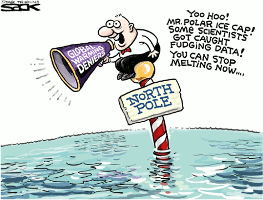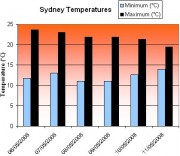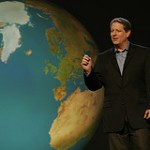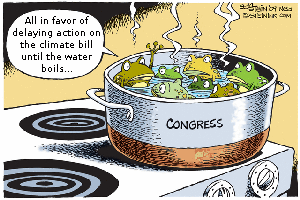 Imagine if I offered someone a 17% return on their investment, that would help to prevent catastrophic long-term environmental consequences and improve the comfort and value of their home. Now envision this person shrugging off this offer and spending their money instead on upgrading their car to a fancy SUV that immediately devalues over time. Would you call this action “rational”?
Imagine if I offered someone a 17% return on their investment, that would help to prevent catastrophic long-term environmental consequences and improve the comfort and value of their home. Now envision this person shrugging off this offer and spending their money instead on upgrading their car to a fancy SUV that immediately devalues over time. Would you call this action “rational”?
This was the crux of the Behavioral, Efficiency, and Climate Change conference I attended this week, that looked into the psychological motivations of human beings, exploring why they continually make poor choices and uncover the motivating factors to help people make better decisions. Opening keynote speaker, Dan Ariely author of Predictably Irrational: The Hidden Forces that Shape Our Decisions, is a behavioral economist who explores such questions as, “Do you know why we still have a headache after taking a five-cent aspirin, but why that same headache vanishes when the aspirin costs 50 cents?
In one poignant example, he shared his experience as a bomb victim in an Israeli hospital for 4 months. When he had to get his bandages removed the nurses wanted to rip them off quickly rather than a slow undressing. He argued for the latter, but they said that quick removal was the less painful option. This brought him down the road of behavioral psychology and through his own experiments with volunteers, using interesting pain inducing techniques, he found that people preferred slow prolonged pain rather than intense shorter experiences. He brought his evidence back to the nurses who cared for him and upon learning about his findings one nurse exclaimed: What about my pain of having to experience your screams or the pain of adopting something new?
The four day conference explored many of the questions of why people make irrational decisions, all the while we think of ourselves as unbiased and objective. Take climate change, despite the evidence that our collective impacts are surpassing the worst case scenarios predicted by the IPCC, support for Climate Change action is on a decline. This can be primarily explained by humans being hard wired to deal with immediate threats. Here are a couple of other interesting reasons on why we do not shift our behaviors to fight climate change:
- Choices are habitual
- Lifestyle change requires immediate sacrifices: time, money, and doing things differently than peers
- People pursue risk seeking rather than risk avoidance activities
- People believe we can adapt and that technology will save us
- It is hard for us to understand or worry about intangible future consequences and we are always looking for an enemy– it is hard to believe it is us!
- Wide range of measures make it difficult for people to adopt– Where do I start?
While many believe that the invisible hand of the market will save us, time and again this assertion has been proved wrong such as the recent collapse of ocean fisheries. Just last week, fishing nations agreed to a 30% decline in fishing yields, giving blue fin tuna a 60% chance of recovering in 15 years– tuna’s numbers have been decimated to 15% of their historical size.
Ultimately, some of the biggest findings from leading social scientists, economists, and industry experts revealed that humans are typically not moved by facts but by emotions. Our deeply held beliefs prevent us from integrating new, sometimes life saving information. I leave you with some exciting information provided by Hannah Choi Granade, lead author of the McKinsey report on “Unlocking Energy Efficiency in the U.S. Economy“. If our nation were to invest $520 billion dollars in upfront investments, we would capture $1.2 trillion dollars in energy savings– and that is without behavior changes. That would lead to a 23% decline in projected demand, saving enough electricity to power Russia and provide natural gas to Canada for a year.
Let’s hope our leadership comes through for Copenhagen and beyond!


 Massachusetts’ citizens will be gathering together tonight in solidarity with the citizens of those nations that will be first to face the impacts of climate change. The candlelight vigil is part of
Massachusetts’ citizens will be gathering together tonight in solidarity with the citizens of those nations that will be first to face the impacts of climate change. The candlelight vigil is part of  For the past seven weeks, college students from around the region have been camping out on Boston Common on Sunday nights calling for Massachusetts to run entirely on clean energy by 2020. After
For the past seven weeks, college students from around the region have been camping out on Boston Common on Sunday nights calling for Massachusetts to run entirely on clean energy by 2020. After 

 Imagine if I offered someone a 17% return on their investment, that would help to prevent catastrophic long-term environmental consequences and improve the comfort and value of their home. Now envision this person shrugging off this offer and spending their money instead on upgrading their car to a fancy SUV that immediately devalues over time. Would you call this action “rational”?
Imagine if I offered someone a 17% return on their investment, that would help to prevent catastrophic long-term environmental consequences and improve the comfort and value of their home. Now envision this person shrugging off this offer and spending their money instead on upgrading their car to a fancy SUV that immediately devalues over time. Would you call this action “rational”? Nobel Prize winner and former Vice President Al Gore has published a new book
Nobel Prize winner and former Vice President Al Gore has published a new book 